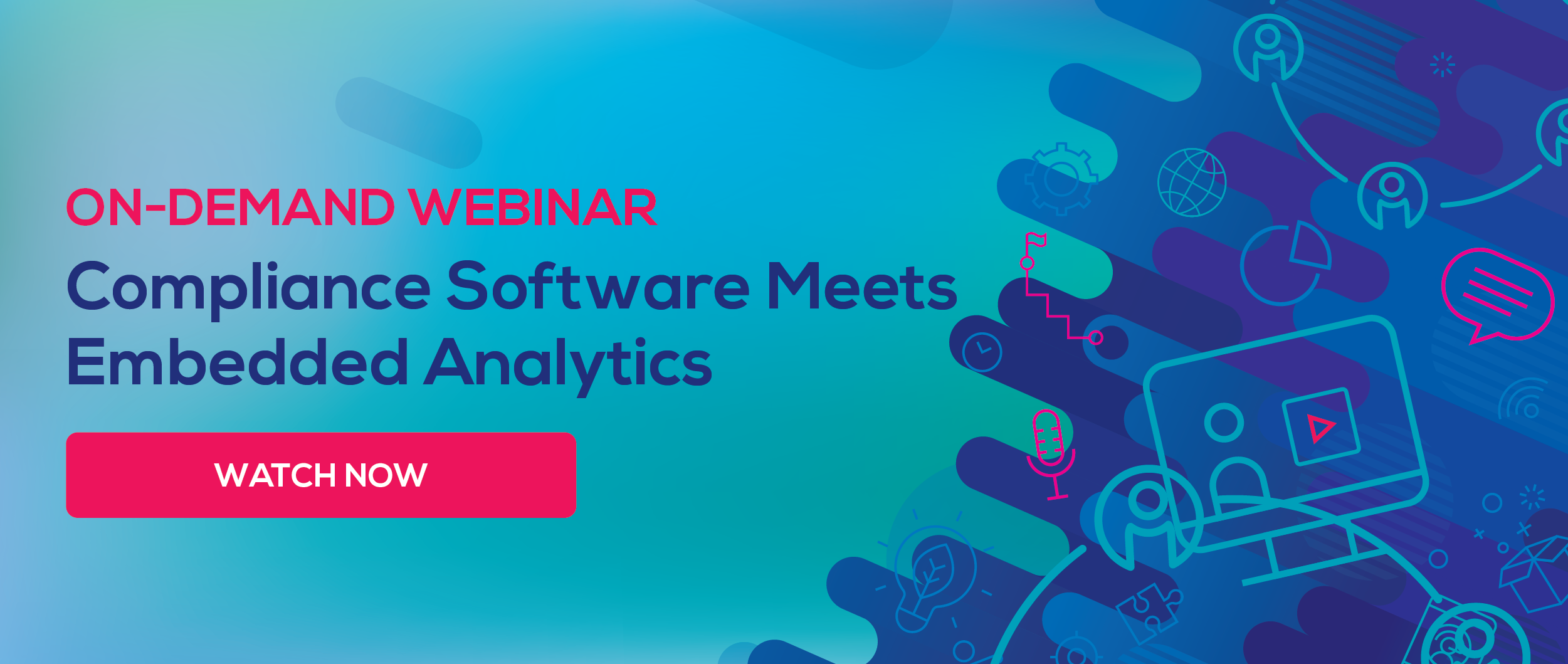Star Product Manager Tim Ward sits down for an in-depth Q&A with Logi Analytics VP of Product Marketing Brian Brinkmann
Embedded analytics makes applications infinitely more valuable, separates software from competitors, and offers new revenue streams—but it can also be a daunting undertaking. Where should you start your embedded analytics journey? And what are the important steps along the way?
Tim Ward is Director of Product Strategy at StarCompliance, a leading provider of regulatory compliance software for financial institutions. He recently shared lessons learned from his company’s journey embedding analytics with Logi Vice President of Product Marketing Brian Brinkmann. Star is partnering with Logi to embed analytics in its software, which will deliver two to three times more platform functionality than ever before.
Brian Brinkmann: Where were you when you started your analytics journey, and what you were looking for in an analytics solution?
Tim Ward: Star has been around for about 20 years. We redeveloped the compliance platform we have about 12 years ago, and we’ve always had some kind of reporting capability within the product. A lot of the time, that's meant Excel reports or flat-data exports. We’ve had our own graphical reporting capability, as well, and we made the decision to make it self-service and provide a lot of functionality to our clients.
But the feedback has been: “While we can get at the data, we’re still exporting it from the application and manipulating it in Excel. We’d love to do even less of that. Anything that will save us time and get us to the insights in the data faster.” We were looking for a different approach to the reporting solution—a much more managed experience, where we’d be more thoughtful about what information we needed to present to our clients and end users, and build that into the fabric of the application.
Brinkmann: How important was the evaluation process and what did you learn along the way?
Ward: I think we’d originally planned for a three-week evaluation process. We came up with a list of eight possible vendors and we short-listed it down to two or three. Then I think what happened was, because it was such an important decision for us, we decided to extend that evaluation period and do a deeper dive proof-of-concept.
We were also interested in how easy it might be to build this ourselves. We had a bit of a “build” philosophy. So, it was a change of mindset for us. We wanted to know, is going to a vendor actually going to be easier than an in-house? And can we train our dev teams properly, or promote the skills required and all the practicalities?
The second thing we focused on was security, and building our security model into the application. Star's is a fairly complex security and entitlement model. Our software is used by firms that have tens of thousands of employees across 30 or 40 different locations, and because of the requirements around personal identifiable information, there is personal financial information within our product. So it was really important to us that we were able to implement our existing security model.
Brinkmann: How important is the user experience—be it self-service or even the managed content—to the success of the product?
Ward: A compliance application is like the ultimate business application. That is, it's not necessarily serving up a task that everybody really wants to do. They just want to get in, do what they need to do as quickly as possible, and get out again. We started to think a lot about how to improve engagement for our clients' compliance teams, and that was about making those apps behave like the consumer apps we use at home.
So the business app has to look nice, feel nice, and be interactive. Some products we looked at gave you more of that out of the box, but then you had to buy into that whole end-to-end pipeline and strategy and design aesthetic. One of the advantages of the Logi product for us is that we could still control that part of it. We could control the styling. We could control the interactions. We could put our look and feel on it. We'd be working within this framework that gave us that flexibility. So yeah, it's incredibly important for us to keep driving that improvement in user interaction.
Brinkmann: What changes do you see coming for your compliance software product line that will help your customers even more?
Ward:The reporting and analytics piece is obviously going to now be a theme that runs through the next five years, and there’s loads of opportunities around how we can apply that into the compliance domain. I think after we’ve done that “MVP,” if you like—that first year of actually getting the product embedded—we'll be releasing 10 to 20 different types of dashboards within that MVP.
We're also interested in embedded analytics and visualizations within key workflows. So as well as the big dashboards, there's the visualization of a key piece of information that might help the user review or make a decision. And then Logi kindly came along and gave us a primer on predictive analytics and how it’s used in other industries like healthcare and manufacturing. We came up with probably 10 or 15 good use cases within the financial compliance domain around how we could fully introduce the concept of predictive analytics, and to use it to do something that's meaningful and useful for our clients.




